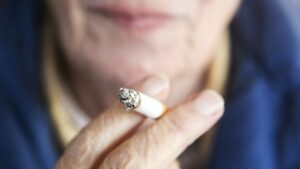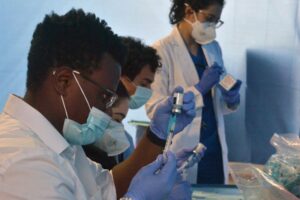Researchers examined the etiology of fatigue in the post-acute phase of severe acute respiratory syndrome coronavirus 2 (SARS-CoV-2) infections in the current cross-sectional study.
The study included 37 persons with an average age of 65.0 years who had experienced fatigue six to 26 weeks after a mild SARS-CoV-2 infection but had no prior neurological illness history.
52 individuals without tiredness who were matched for sex, age, and gender (controls) were included for comparison; six of these individuals had mild COVID-19 and had recovered from it without pCF.
The autonomic (ANS), central (CNS), and peripheral nervous systems (PNS) were assessed using a number of non-invasive neurophysiological and behavioral tests, followed by a K-means cluster K-and gap analysis.
Primary motor cortex function was evaluated using transcranial magnetic stimulation (TMS), while sensory circuit dysfunction was investigated using sensory nerve stimulation.
Women made up 73% (n=27) and 71% (n=37) of the study participants in the pCF and control groups, respectively. Long COVID patients who experienced fatigue showed under-activity in certain brain circuits, dysregulated autonomic systems, and myopathic alterations in the skeletal muscles as compared to sex- and age-matched controls. However, it seemed doubtful that anomalies in sensory processes and descending neuromodulatory drive were a factor in pCF.
Based on the previously published relative SARS-CoV-2 variants of concern (VOC) incidence rates in the United Kingdom (UK), the team estimated that 83.0% of the pCF group were infected with the SARS-CoV-2 Alpha VOC.
The TMS findings showed that intracortical facilitation (ICF), a measure of intracortical glutamatergic function, was significantly lower among pCF patients than controls (conditioned motor evoked potential versus unconditioned was 171% versus 258%), indicating reduced cortical excitability.
The pCF patients showed increased peripheral fatigue levels and greater visual reaction times. The maximal twitch evoked by direct electrical stimulation of muscles following sustained muscle contractions was 49% and 67% in pCF and controls, respectively.
Indicating that pCF patients develop metabolic alterations in muscle fibers following prolonged activities that result in lowered force output. Post-COVID fatigue patients had normal grip strength, without any evidence of fatiguing transmission at the neuromuscular junction (NMJ), and normal intrinsic excitability of motoneurons.
The mean values for resting heart rate were significantly greater among pCF patients than controls (75 versus 68 beats per minute, respectively). On the contrary, post-COVID fatigue patients had significantly lower blood oxygen saturation (SaO2) values than controls (95% versus 97%, respectively), probably due to sustained pulmonary damage and/or vasculopathy.





